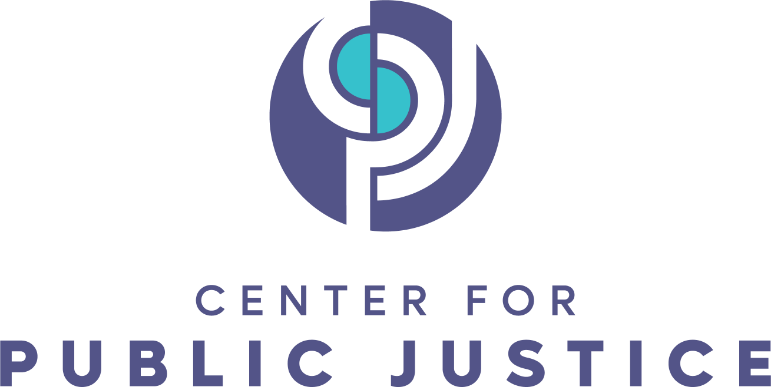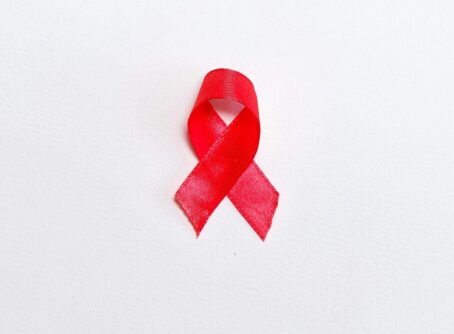
This article is part of Shared Justice’s Transformative Justice series running throughout January and February. The series explores one of the most urgent areas for reform within the juvenile justice system: juvenile probation. Focusing on promising practices in diversion and prevention, including Credible Messenger Mentoring, the series will highlight opportunities for government and civil society to create a juvenile justice system that is more equitable, effective, and restorative.
In the Gospels, Jesus regularly spoke in parables that those around him struggled to piece together, frequently misunderstanding his words about wealth, power, sin, and so forth. But Jesus also spoke quite plainly about a number of other social issues — among them, the obligation to properly care for children and youth. In Matthew 18:6, Jesus’ language on the subject is straightforward: “if anyone causes one of these little ones — those who believe in me — to stumble, it would be better for them to have a large millstone hung around their neck and to be drowned in the depths of the sea.” Then, again in verse 10: “see that you do not despise one of these little ones. For I tell you that their angels in heaven always see the face of my Father in heaven.” There isn’t any room for misinterpretation in these words; Jesus is saying that judgment comes for those who mistreat children. And it’s critical to remember that he isn’t just speaking to parents and families. He’s speaking to governments and their officials. He’s speaking to teachers, counselors, and pastors. That’s because Jesus is concerned with the entire order of things in the world —“every square inch” as the Dutch theologian and Prime Minister Abraham Kuyper was fond of saying. In the United States, we have often failed to respond appropriately to Jesus’ command to care for our young people, and much of this failure begins with the practices and processes of our juvenile justice systems. Thankfully, we are not without hope for change (as is always the case for a world in which Christ has lived, died, and risen). In this article, I will briefly explain the problematic pieces of our juvenile justice system and describe a particular practice — Credible Messenger Mentoring — by which some of these challenges can be addressed, demonstrating why public justice necessitates such a strategy for improving the lives of our nation’s justice-involved youth.
For most of the 21st century, the story of the juvenile justice system has been arrest, adjudicate, place on probation, or incarcerate, and repeat. According to the Interagency Working Group on Youth Programs, just over two million youth under age 18 are arrested every year, and of those two million, around 1.7 million are processed, and a majority are adjudicated delinquent — which is the term used by most states for youth guilty of a crime or misdemeanor. Other youth are designated as status offenders, which means they committed an offense that would not be a crime or misdemeanor if they were adults. When it comes to achieving justice in our juvenile system, there are needs to be addressed both before and after adjudication occurs. Much of what is broken about the way we handle justice-involved youth has to do with the sentences that these youth receive after their adjudication. Studies show that juvenile courts over-rely on incarceration, even for youth who are only guilty of minor misdemeanors or status offenses. Additionally, 57 percent of all youth adjudicated are placed on probation.
Juvenile probation is often referred to as the workhorse of the juvenile justice system and is in desperate need of reform across the states. But the problem is that, while necessary in some particular situations, neither incarceration nor probation work for the vast majority of justice-involved youth. The Annie E. Casey Foundation reported in 2018 that “research indicates that surveillance-oriented probation is not an effective strategy for reversing delinquent behavior, with insignificant effects on reoffending and especially poor results with youth at low risk of rearrest.” Further, from the same report, the Casey Foundation details that strategies aimed at deterrence and punishment increase recidivism (reoffense rates) and ignore scientific knowledge of youth development because these youth need to be nurtured toward “psychosocial maturation.” In short, justice-involved youth need less retribution and more restoration. But how?
DIVERSION AND CREDIBLE MESSENGER MENTORING
The primary alternative to incarceration and probation is diversion. Diversion strategies vary in content and in timing: it could be counseling, warn-and-release, particular programming offered by a nonprofit, or participation in a rehabilitation institution; and it could happen before a juvenile is formally processed, while they are being processed, or after they have already been adjudicated. Regardless, evidence shows that diversion and the programming it entails reduces recidivism, restores youth to their communities, and frees governments to devote confinement and probationary resources to youth that are dangers to themselves or their communities.
Several diversion practices stand out among others as particularly successful. Every juvenile justice system should be connected to a nonprofit, community group, or counseling service that offers a Credible Messenger Mentoring (CMM) program. CMM, as a practice, pairs justice involved youth with mentors who were formerly justice-involved themselves — and the results are promising. According to Community Connections for Youth, “Credible Messenger Mentoring is a transformational process through which individuals from similar backgrounds, especially men and women who were themselves system-involved, engage youth in structured and intentional relationships that help them change their attitudes, beliefs, and actions.”
Several studies point to success stories when credible messengers are involved, including: a 50 percent decrease in youth felony arrests in troubled New York City neighborhoods, a 69 percent decrease in juvenile probation recidivism rates in the same neighborhoods, and a 76 percent drop in gun homicides in Richmond, California.
CMM applies basic, intuitive relational principles to the way we interact with youth. Young people (and all people, for that matter) are more likely to trust information and mentorship from someone who has had similar life experiences, and they’re more likely to feel hopeful for themselves when they see someone who has been where they’ve been and still changed the direction of their lives for the better. The repercussions are similarly positive. Mentors — who may or may not still struggle with their own pasts — participate in meaningful work that allows them to positively impact their communities and process their own histories, communities are improved by pro-social behaviors encouraged in mentorship meetings, public safety improves, and formerly justice-involved youth perhaps become Credible Messengers themselves!
CREDIBLE MESSENGER MENTORING AND PUBLIC JUSTICE
CMM offers an ideal way for government, nonprofits, faith communities, families, and individuals to work together both directly and indirectly to promote the well-being of young people and their families. Secular and faith-based nonprofits can start CMM programs; schools can offer times and spaces for these programs to happen; and families, churches, and communities can offer individuals to staff these programs and become strengthened by the resulting effects. The pathway to launching a CMM program as a nonprofit is becoming increasingly possible thanks to organizations like the Credible Messenger Mentoring Movement (CM3) and the Credible Messenger Justice Center. These organizations exist as resources to nonprofits, churches, or community groups that want to identify and train credible messengers to serve justice-involved youth in their community. In fact, that’s how most credible messengers are employed in the first place — through nongovernmental organizations or groups that have partnered with their state or local governments. For example, in 2012, newly-appointed probation commissioner Vincent Schiraldi envisioned a juvenile justice system that relied more on support rather than punitive measures. Utilizing the expertise of nonprofit leader David Muhammed, who had employed credible messengers in Oakland, CA, Schiraldi implemented a New York CMM program called Arches. Arches was a huge success: it was responsible for the 69 percent decrease in recidivism and 50 percent in youth felony arrests that are cited in the previous section. Really, Arches was the result of community leaders combining their expertise with the authority of government partners. And thanks to the organizations like those listed above , what happened in New York City can be replicated throughout the country.
“CMM, a restorative justice practice, embodies public justice because of the way it sees justice-involved youth as whole people.
But CMM is more than just a practice — it’s a movement. The notion behind CMM, generally speaking, is that our justice system isn’t meeting our expectations. CM3, led by President and CEO Clinton Lacey, has a mission to “to break the cycle of incarceration and address long-term impacts on young people of color,” who are disproportionately affected by the practices of juvenile justice systems. Lacey started the organization after serving as the Director of Washington D.C.’s Department of Youth Rehabilitation Services, and prior to that, Deputy Commissioner of New York City’s Probation Department where he worked to bring CMM to each. But still, there’s more to CMM. CMM is part of a larger movement for restorative justice practices to complement and sometimes replace the systems of retributive justice that have dominated for centuries. Restorative justice, in short, describes the principle that a society’s response to wrong-doing should be focused on restoring the wrong-doer to their community. For something to be truly restorative, it cannot just involve an offender and a victim. The community that surrounds these parties must take part in the restoration as well. So, CMM is restorative in the sense that it involves community members (the credible messenger mentors) in the justice system’s efforts to reintegrate justice-involved youth back into society safely and effectively (because, of course, restorative justice is itself evidence-based). CMM, a restorative justice practice, embodies public justice because of the way it sees justice-involved youth as whole people. They are sons, daughters, brothers, sisters, students, church members, community members, and inhabitants of a country, state, and locality. The peace they make cannot just be with their relationship to their governments; it has to be made with each relationship fractured by their offense.
It’s clear that our justice systems need serious reform. But until recently, “reform” has meant merely a different type of retribution. The reform that our justice systems need — especially our juvenile justice systems—is restorative in nature. We need strategies and processes that focus on healing and restoration. A public justice framework tells us that programs like Credible Messenger Mentoring fit the vision that God has for a flourishing society, and research tells us that such programs work in practice, too. The moment is right for juvenile justice reform that’s aimed at restoration.
Caleb Crary is a senior political science student at Whitworth University in Spokane, Washington. In the spring and fall semesters of 2021, Caleb joined CPJ as a research intern and wrote reports on state juvenile probation systems for use in reform efforts. Upon graduation, Caleb will join the Teach for America corps as an English teacher in Tennessee.





